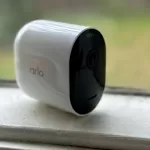![]()
The basic hardware of the Google Pixel Tablet is fine, but it’s hard to justify it at its price, especially while problems with Android apps persist.
| Pros | Cons |
|---|---|
| Charging dock is included | Charging dock is included (so it’s more expensive than it should be) |
| Good overall performance | Too many Android apps don’t respect widescreen |
| Acts as its own Chromecast | Speaker dock doesn’t always charge to 100% |
Score: 2.5/5
Google’s Pixel Tablet – far from the company’s first tablet, to be clear – brings the power of Google’s Tensor G2 chip to a larger display for the first time. For the absolute Google faithful this may well have been what they’ve been waiting for, a true “iPad Killer” device.
Sadly, it’s not that.
While the basic tablet hardware is fine, it’s beset with two serious problems, one in hardware and one in software that lead to a compromised device that’s hard to recommend.
Design
![]()
There’s not so much you can really do with tablet design to stand out. Thankfully Google resisted the urge to go the “full” Pixel experience with a camera bar on the back of the Pixel Tablet.
Instead what you get is a regular 10.95 inch tablet in either “Porcelain” or “Hazel” finishes, though you shouldn’t be fooled into thinking that this feels like fine china in the hand. It actually seems a little cheaper than you might expect from an $899+ tablet device, with a definite plastic feel at the back.
Controls are at the upper right with volume and combination power button and fingerprint unlock sensor. These work well, though I do wish Google hadn’t also put rubber strips on the bottom of the Pixel Tablet.
Why? Because with a monolithic block like this, if you’re navigating your way to the volume or power buttons by feel, there’s little between either side – but of course the rubber strips won’t change the volume for you.
The Pixel Tablet’s real unique selling proposition is the included Charging Speaker Dock. This 100% gives it the visual impression of being a big Nest Display, and that’s certainly not accidental. It’s just that it’s a Nest Display that you can rip the head off, which is not recommended for Google’s smart displays generally.
The Pixel Tablet attaches magnetically to the Charging Speaker Dock, and while I was concerned about slipping when I had my brief hands-on with it, in real world use I rather quickly got used to slotting into the right place most of the time.
![]()
Still, there’s a hardware problem here, and it’s that Google only offers the Pixel Tablet with the Charging Speaker Dock included, which undeniably must be upping the price.
At $899 (or $999 for the 256GB model) it’s comparatively up against the 10th Gen iPad (or the entry level iPad Air), where without the dock it might be a really compelling proposition price-wise.
The added charging is neat – sort of, more on that later – but the speakers themselves have a fairly muddy presentation for most content. It’s not unlistenable for sure, but Google’s put better speakers into other smart products in the past.
Performance
![]()
Like its Pixel phones, the Google Pixel tablet runs on one of Google’s own “Tensor” systems, in this case the same Tensor G2 packed into phones like the Pixel 7 Pro and Pixel 7a.
That’s fine for general application performance; while at launch the Pixel Tablet baulks at many popular benchmarks. This is a common Google ploy, and I expect it to start magically “working” a week or so after launch.
Still, I already know more than enough about the Tensor G2’s performance to see that it’ll be a perfectly capable consumption device processor. Slightly less so for professional tasks, but then Google’s contention is that tablets are at-home entertainment devices, not computers in their own right.
The Pixel Tablet includes Hub Mode, which essentially mimics the functionality of a Google Nest Hub. It’s a nice enough addition if you want simple alarm clock, weather, smart home controls and so on, but every time I used it, I couldn’t help but think that I could do much the same thing with a Nest Hub. A considerably cheaper Nest Hub.
Google’s contention here is that you can do so much more because the Nest Hub devices run on Google’s weird “Fuschia” OS, not Android OS, and this is a full Android device.
It’s not wrong. Android apps will run on the Google Pixel Tablet, and thanks to the power of the Tensor G2, they’ll run quite quickly.
That’s not the same thing as saying they run well, because there’s a big problem here, albeit not one exclusive to the Pixel Tablet.
Google has said so many times over the years that it’s taking Android Tablet apps seriously, but the reality even years on is that way too many apps do not properly respect a widescreen – in this case, 16:10 – aspect ratio.
![]()
Flipping the Pixel Tablet from portrait to landscape all too often results in a boxed in app with a load of wasted space. Some will offer to relaunch for a better widescreen experience, but this often still leads to a crunched in app.
If you mostly just live in a Chrome-and-YouTube tablet world this might be OK, but it falls apart even within Google’s other apps; YouTube Studio, for example, doesn’t seem to think that widescreen should exist.
Let that sink in for a second; an app made by Google, about Google services about managing your widescreen videos doesn’t think that widescreen matters.
The comparison against iPadOS couldn’t be more stark here, with so many apps that respect that change on an iPad but ignore it in the Android world.
Again, given its premium pricing for a consumer tablet, it makes it genuinely tough to recommend the Pixel tablet when there’s an alternative that just does this kind of thing so much better.
Battery
![]()
The Pixel Tablet has a sealed 27 watt-hour battery that Google says is good for up to 12 hours of video streaming. That’s quite the Netflix binge session right there, but as always usage can make a huge difference to the battery endurance of any portable device.
Testing with YouTube streaming for an hour saw the battery depleted by around 11%, which leans it more towards 9-10 hours of video streaming, though you might get a little more with brightness dialled down and less volume. That’s not bad for a tablet, but it’s not a standout figure to speak of.
The Pixel Tablet of course does come with its charging dock in the box, so you’re sorted for charging, right?
Well… not entirely. There’s two problems here, too.
I’ve got to give credit to Leigh Stark from Pickr for spotting this one, because it did slightly escape my attention at first, but the Pixel Charging Dock doesn’t always fully charge the Pixel Tablet to 100%. More often it hovers between 80-90% charged, which might not be what you want if you want to take your Pixel Tablet with you on a daily basis.
I don’t know for sure, but I suspect what Google’s doing here is a touch of deliberate charge throttling to give the Pixel Tablet an overall longer battery life over the years. That would tie into its positioning as a “home” tablet, because in that context you can just drop it back onto the dock as needed.
The other issue is that because Google’s built the Pixel Tablet from the ground up to charge from the dock, you’ve got to pick between it and a protective case, because there aren’t any that will cover both functions.
That would be a tough call, because you’d need some kind of removable flap at the back to enable the pogo pins that connect up to get a charge. But if you want to protect your Pixel Tablet on the go – and you should – then you’ll have to pop it in and out of its case every time, or ignore the Charging Dock entirely.
Which again floats my head back to the position that perhaps the charging dock should have been an optional extra for those that want it.
Google Pixel Tablet: Alex’s Verdict
![]()
Google deserves all the credit in the world for doing something different with tablets here, and I can see what it’s going for.
It’s just that I don’t quite think it gets there in a way that financially makes a whole lot of sense. If the Nest Hub integrations appeal to you, Nest Hubs are way less expensive.
If you want a powerful premium tablet that respects widescreen and portrait… well, sorry, and I know I’ll get accused of being an Apple fan for saying this, but that’s an iPad right now, not an Android tablet.
However, while there are more plots now in the Google Graveyard than ever before, Google has shown that it’s willing to experiment with its Pixel lines.
This ain’t Google’s first tablet, but it’s the first of its generation, and some of these problems – especially those of Android app widescreen support – are fixable. The Pixel Tablet isn’t the slam dunk that Google might hope it was, but maybe the Gen 2 model could be.
Google Pixel Tablet: Pricing and availability
The Google Pixel Tablet retails in Australia for $899 with 128GB of storage or $999 for the 256GB model.
Google Pixel Tablet: Alternatives
In the Android tablet space, Google’s biggest local competitor is Samsung; for that $899 asking price you’re close to the (at time of writing) asking price for the Galaxy Tab S8 (Wi-Fi) or well above the asking price of its Galaxy A tablets.
Across the Apple pond, the 10th Gen iPad is a more powerful device by a wide margin, but a 256GB model will run you $999, while $749 would only get you a model with a scant 64GB of internal storage.




I have had my pixel tablet for three weeks now. It is by far the best tablet I have ever had and I just don’t get this review. It is not from a pixel user perspective but this is who the tablet it aimed at. The iPad is not an alternative as does not integrate with the pixel phone or watch. I don’t like Samsung’s UI and integration is a bit of an issue. The tablet is light to hold, has plenty of performance and sound is plenty good enough for a tablet. I agree there are too many Android apps that are properly optimised for the screen size. I feel that now there is finally a tablet addressing this market, this will improve over time.
Hi Stephen,
Thanks for the feedback. The Pixel market is only a segment of the overall Android market (and a smaller one at that), but I’m addressing that wider market — I do totally get that for Pixel users there’s a good amount of synchronicity between devices if you’re all in. But for the Android tablet app issue, this is hardly the first Android tablet, and Google’s been making promises around better tablet app sizing for many, many years now — and I’m still waiting. It’s a genuine issue, and like you I do hope it gets better. It could hardly get worse.